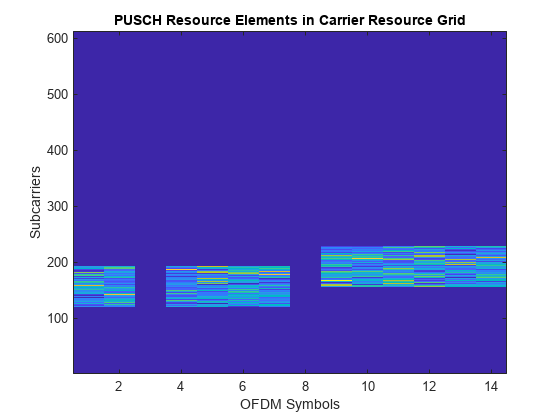nrPUSCHIndices
Generate PUSCH resource element indices
Syntax
Description
[
returns ind,info,ptrsInd] = nrPUSCHIndices(carrier,pusch)ind in matrix form, which contains 1-based physical uplink
shared channel (PUSCH) resource element (RE) indices, as defined in TS 38.211 Sections
6.3.1.6 and 6.3.1.7 [1]. The number of columns in
ind is equal to the number of configured antenna ports.
carrier specifies the carrier configuration parameters for a specific
OFDM numerology and pusch specifies the PUSCH configuration. When you
enable transform precoding, the output ind contains the combined
locations of the data and the phase tracking reference signal (PT-RS). The function also
returns the structural information, info, and PT-RS RE indices,
ptrsInd. The output info contains information
about the associated physical reference signals, bit capacity, and symbol capacity.
ptrsInd is a matrix of PT-RS REs within the carrier resource grid.
When you enable transform precoding, the output ptrsInd represents the
projections of PT-RS locations prior to transform precoding onto the carrier resource
grid.
Examples
Input Arguments
Name-Value Arguments
Output Arguments
References
[1] 3GPP TS 38.211. “NR; Physical channels and modulation.” 3rd Generation Partnership Project; Technical Specification Group Radio Access Network.
